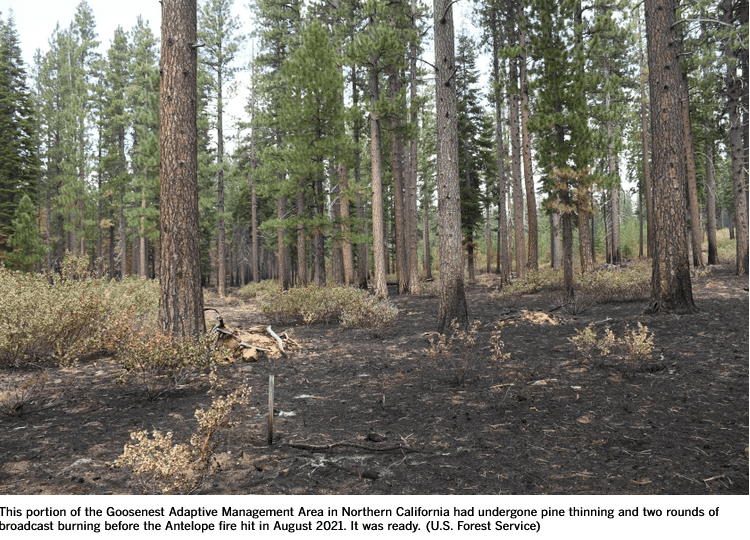Here’s the link:
We have recently convened a partnership of scientists and Indigenous leaders from across the Western states to advocate for the kinds of policy solutions necessary to build beneficial relations between people and the land and to restore resilience to our ecosystems. We call for change by federal and state policymakers, land managers and fire agencies in four main areas.
First, state and federal governments must commit to active stewardship in a manner we have not seen before. Entire landscapes are now endangered, and we must begin implementing ecosystem-level solutions.
Second, active stewardship must include restoration of tribal stewardship across both public and private lands. The Biden administration and a handful of states have called for tribal co-management of public lands. Cultural fire practitioners must have the right to engage in fire management activities according to traditional Indigenous law. And federal and state governments must support long-term action with funding for tribal practitioners so they can expand capacity to do the work.
Third, federal land management agencies need the staffing to actively manage forests. Across the Western United States, the federal government manages around 45% of all lands and over 65% of forest ecosystems. Active stewardship of these expansive lands requires a significantly larger workforce with updated training to align with this new approach. If we are going to return beneficial fire to the landscape — as we must — we cannot expect exhausted fire suppression crews to take care of the needed work in their off-season.
Fourth, we must acknowledge that fire is part of our baseline environmental condition. Our bedrock environmental laws, including the National Environmental Policy Act, the Clean Water and Clean Air acts, and the Endangered Species Act, were adopted at a time when fire suppression was at its peak. We designed these laws with the faulty assumption that people could fully exclude fire and keep our air free from smoke and our ecosystems intact. Therefore, they treat our suite of fire stewardship practices the same as other human activity – akin to building a freeway or power plant – with the attendant regulatory review.
But fire will burn in one form or another. We need to develop laws and policies that encourage the kind of fire that people and ecosystems need. We cannot have clean water, clean air and critical wildlife habitat if we don’t first have resilient, fire-adapted forests.
We do not ignore the risks inherent in these solutions. The Forest Service recently acknowledged that its intentional fires were the ignition source for the Calf Canyon and Hermits Peak fires — vast and destructive blazes in New Mexico this year, the sort of fire that is never a goal of intentional burns. These events must be carefully studied and learned from. But calls to pause or otherwise shut down all use of fire are misguided. In nearly all cases, prescribed fires are kept within the confines of the planning area. The Forest Service’s decision in May to pause such intentional burns sends the wrong message to the public that these tools are inherently unsafe.
Perhaps more important, removing cultural and prescribed fire will make the threat of wildfires worse in the long run. Rather than focus on the source of the ignition as the “cause” of the harms from megafires, we need to focus on the condition of the forest. The current lack of resilience across much of the American West is largely responsible for the devastating effects. Keeping fire and other restoration techniques out of the landscape only makes infernos more likely and more expansive.
We have begun to imagine what “beneficial relations” might look like between people and our forested lands and call for a new stewardship policy. But we cannot implement them without fundamentally changing the systems we’ve built to try to keep fire out of our landscapes. The West is in a fire crisis. It is time to change the behaviors that caused it.
My take: I don’t think the pause “sends the wrong message”. Sometimes you have to go slow to go fast (think collaboration). According to the Hotshot Wakeup report on Friday there are many managed fires going right now, so there’s that. And the folks I’ve talked to, who are working on the report have all kinds of improvements to be be considered. Last year the managed fire pause caused the same kind of drama, and yet here we are with plenty of WFWB going on as we speak. To my mind, “in nearly all cases” isn’t very compassionate to say, the folks in NM. To me, “trust us, we’ve (mostly) got this, except when we obviously don’t” is actually the wrong message.
